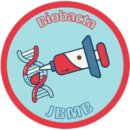Vol. 2 No. 1-6: Assessment of Knowledge and Preventive Behaviours Regarding Cholera among School Students in Latakia, Syria
By: Mahdi Abed Neamah AL Musawi1*, Frial Mahmoud Nizamli2, Roqia Khairallah Muzhir3, Huda Shawky Mahmud4
1Department of Nursing, University of Kut, Wasit, 52001, Iraq.
2Department of Nursing, University of Kut, Wasit, 52001, Iraq.
3College of Medicine, University of Baghdad, Baghdad, Iraq.
4Pediatric Nursing Department, College of Nursing, University of Hilla, Babylon, Iraq
Abstract
Background: Cholera remains a global health hazard and a sign of underdevelopment in many countries. Aim: This study aimed to assess the knowledge and preventive behaviours of school students towards cholera in Latakia after a recent outbreak. Method: This study used a cross-sectional design. The study included 150 participants aged 13-15 years. Data was collected from March to April 2024 at Ghassan Zwan school in Latakia. The questionnaire was developed based on previous studies. Results: Based on the percentage mean, the students’ knowledge and preventive behaviours scale would be categorized into three levels: <30% considered inadequate, 30-70% considered adequate, and >70% considered good. The majority of the participants demonstrated adequate knowledge (66.75%) and good preventive behaviour (78.91%) toward cholera. There is a difference in knowledge between male and female participants. Conclusion: enhanced knowledge and preventive behaviour levels play an essential role in reducing the prevalence rate during an outbreak. Further research on the preventive behaviours of cholera among primary school pupils is recommended.
